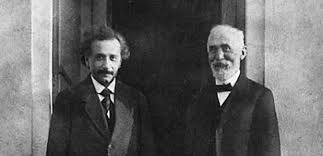
The aether is the hypothetical medium through which light and other electromagnetic waves are supposed to propagate.
In the nineteenth century, aether theory was hot science. People like Lorentz, Heaveside, Kelvin have worked on it. They made various mechanical models, in which the aether was some elastic medium.
The advent of relativity has since made it an unfashionable subject. Relativity has shown that the speed of light is the same to all observers, independent of their velocity. This means that you cannot tell what your velocity relative to the aether is. It was concluded by most that this means that the aether cannot exist.
Here, we argue that aether theory is not such a bad idea. It will be argued that it is not against the principles of relativity to use an aether model. Furthermore aether-like models have the advantage of being easier to understand intuitively than purely mathematical models.
The aether model referred to here is based on electric circuit diagrams. This model is described by the Maxwell equations, and can therefor be considered as a model for these equations. Maxwell equations are invariant under Lorentz-transformations. So in a reference frame moving at a constant speed, the equations change according to the Lorentz transformation, but any observable end-result will remain invariant. But this is conceptually just the same as changing to another Cartesian coordinate system! The only difference being that although changing the Cartesian coordinate system changes all numeric values in the model, it is easy to visualize that the system behaves in an identical way, it is just looked at literally from a different angle.
So we come to the main point:
Just because there are more
than one equivalent models of describing
reality, this does not mean that these models are wrong.
The argument is saying that you could choose your favorite aether model never be proved wrong by experiment. In some cases, you may want to work with a model that you can actually visualize.
A general rule related to the above arguments is that whenever there is a symmetry in nature, you are given extra freedom for your model. The observer cannot distinguish between the objects of the symmetry operation, so you just choose one particular object. For example, the mirror image of the universe probably behaves in an identical way to the real universe. We observers can't even tell which one we are in, because all our measuring equipment is covariant with the reflection. But when we make a model of the universe, we don't make two mirrored copies, we just concentrate on one of them, and temporarily ignore the others, though being aware of the symmetry.
Interestingly, Einstein later reconsidered his view on the non-existence of the aether. It seemed superfluous in the context of special relativity, but in general relativity, it seems inescapable for space-time to have certain local properties.